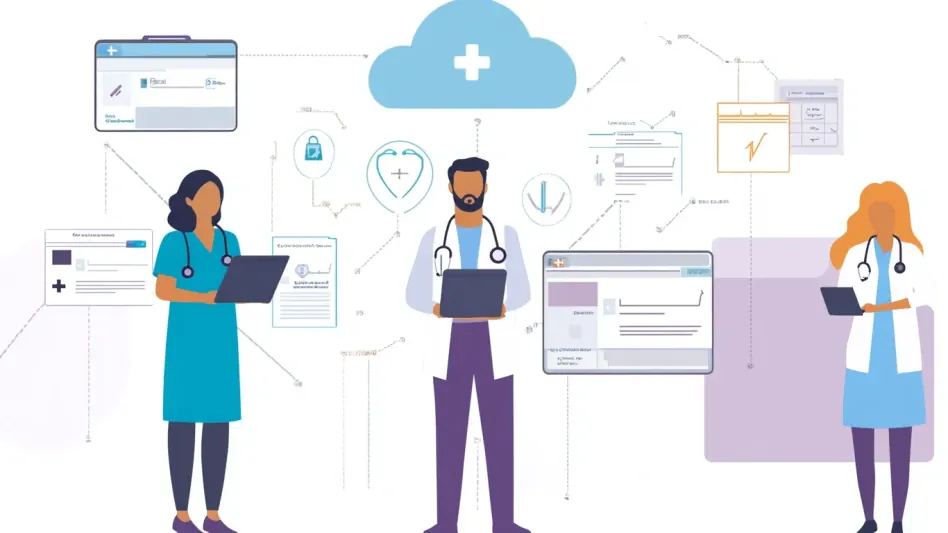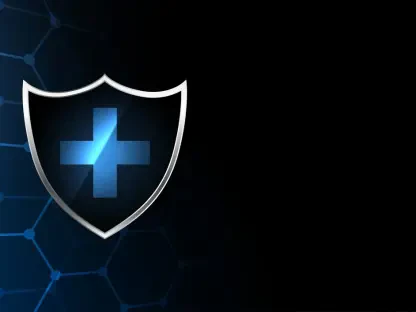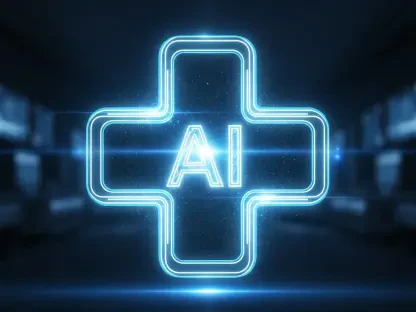Modernizing healthcare communication systems is crucial in an era where interoperability can vastly improve patient outcomes. With the seamless integration of cloud-based fax solutions, healthcare providers can bridge traditional and modern systems efficiently while enhancing data exchange and operational performance. This technological advancement facilitates a connected healthcare ecosystem, ensuring that high-quality care becomes the standard across diverse medical facilities.
The Challenge of Interoperability in Healthcare
Current Obstacles
Healthcare providers are faced with numerous challenges, including balancing high-quality care with financial limits and rapidly changing regulations. Interoperability is a major issue, with a third of hospitals struggling to fully integrate patient information from different providers. This lack of seamless communication hampers the delivery of efficient and coordinated patient care, as critical data often remains locked within isolated systems. It is not uncommon for healthcare professionals to spend valuable time searching for necessary information from various sources, leading to delays in treatment and increased potential for errors.
The complexity of healthcare procedures and the multitude of information systems used by different institutions exacerbate the issue. Despite significant investments in electronic health records (EHRs) over recent years, many healthcare providers still rely on outdated technology to transmit critical patient information. These disjointed systems contribute to a fragmented healthcare landscape, making it challenging to achieve the level of interoperability needed for optimal patient outcomes. The need for a solution that can unify these disparate systems has never been more apparent, setting the stage for the integration of advanced cloud-based technologies.
Legacy Systems and Their Continued Use
Even with advancements in electronic health records, traditional fax systems remain essential for exchanging patient records, authorizations, and referrals. These outdated systems, however, often trap critical patient data in silos, hampering efficiency and coordination. Healthcare facilities continue to rely on fax due to its simplicity and the widespread trust established over decades. Fax machines are deeply embedded in the infrastructure of many institutions, making it challenging to phase them out completely. This reliance on legacy systems presents a significant barrier to achieving true interoperability.
Moreover, the healthcare industry’s cautious approach to adopting new technology stems from the need to ensure patient privacy and regulatory compliance. The evolution of fax systems into more advanced, cloud-based solutions offers a viable pathway to overcome these challenges. By upgrading traditional fax systems and integrating them with modern healthcare platforms, institutions can maintain the reliability of their existing frameworks while enhancing data exchange capabilities. Such integration is crucial for improving the flow of information, reducing manual errors, and ultimately elevating the standard of patient care.
Embracing Cloud-Based Solutions
Integrating Traditional and Modern Systems
Cloud-based fax solutions offer a practical way to enhance interoperability. By leveraging APIs and technology partnerships, these solutions can seamlessly integrate faxed documents into EHRs, making real-time data accessibility possible while ensuring confidentiality and HIPAA compliance. This integration means that patient information transmitted via fax can be instantly available within the digital data systems used by healthcare providers, bridging the gap between outdated and modern communication technologies. As a result, medical professionals can access comprehensive patient histories and vital documentation without delays, facilitating more informed decision-making.
Implementing cloud-based fax solutions also mitigates the risks associated with physical fax machines, such as misplaced documents and unauthorized access. By automating the process and securing data transmission, cloud technology ensures that patient records remain confidential and comply with strict healthcare regulations. This approach not only improves operational efficiency but also bolsters the security and reliability of transmitted information. Consequently, healthcare providers can focus on delivering quality care, confident that their communication systems are robust, secure, and up to date.
Operational Advantages
Adopting cloud-based solutions leads to streamlined communication processes. Healthcare providers can eliminate on-premises equipment, facilitate scalable communication capabilities, and experience less downtime, particularly important during peak periods. The transition to cloud technology alleviates the burden of maintaining and updating hardware, reducing IT expenses and freeing up resources for patient care. This agility allows institutions to adapt to fluctuating demands, ensuring that critical communications remain uninterrupted during high-volume periods.
Scalability is another significant benefit of cloud-based fax solutions, allowing healthcare facilities to expand their communication frameworks as needed without extensive infrastructure investments. This adaptability is crucial for institutions experiencing growth, mergers, or changes in patient volume. Additionally, cloud solutions offer the advantage of regular software updates and maintenance provided by the service providers, ensuring that systems remain current with the latest advancements and security measures. This proactive approach ensures that healthcare organizations can deliver consistent and reliable patient care while keeping operational costs under control.
The Financial and Operational Impact
Cost Efficiency and Scalability
Financial implications are critical in healthcare. With over $8 billion lost annually due to IT inefficiencies, cloud-based solutions present an opportunity to reduce redundancies and optimize resource utilization, thereby mitigating substantial financial losses. Hospitals and clinics can redirect these savings towards improving patient care, investing in new technologies, and enhancing staff training. By streamlining communication processes and reducing the need for manual handling of documents, cloud fax systems decrease administrative workloads, allowing healthcare professionals to focus more on patient-centered activities.
Moreover, cloud-based solutions offer a cost-effective alternative to maintaining and upgrading traditional fax machines and on-premises servers. This shift to a subscription-based model allows healthcare providers to manage their budgets more effectively, with predictable expenses and no need for significant upfront investments. The scalability of cloud solutions ensures that healthcare organizations can adjust their service levels according to their needs, making it easier to manage financial resources efficiently. This enhanced operational efficiency translates into better patient experiences and overall improved healthcare delivery.
Continued Relevance and Modernization
Even as the healthcare industry aims towards digitalization, the enduring relevance of legacy systems is acknowledged. The modernization effort builds on the trust and reliability of traditional fax systems, providing immediate improvements without the need for disruptive overhauls. By enhancing existing communication frameworks with cloud capabilities, healthcare providers can maintain the integrity of their established processes while evolving towards more sophisticated and interconnected platforms. This hybrid approach allows for a smoother transition and greater acceptance among staff who are accustomed to legacy systems.
The modernization of fax systems with cloud technology also ensures that healthcare facilities remain compliant with regulatory requirements. HIPAA compliance in particular remains a key consideration, and cloud fax solutions are designed to meet stringent security standards. By adopting these technologies, healthcare organizations can demonstrate their commitment to safeguarding patient information and maintaining regulatory compliance while improving efficiency. This balanced approach enables institutions to progress towards full interoperability and digitalization at a manageable pace, ensuring that patient care remains at the forefront of their mission.
Future Perspectives in Healthcare Communication
Commitment to Interoperability
The commitment to achieving interoperability is evident, with more hospitals engaging in interoperable exchanges. The global healthcare interoperability solutions market’s anticipated growth signifies the ongoing demand for seamless integration and innovation. As more healthcare providers adopt interoperable systems, the industry can expect enhanced data sharing, improved patient outcomes, and greater overall efficiency. This trend underscores the importance of continued investment in technologies that facilitate seamless communication and data exchange across the healthcare ecosystem.
Advancements in interoperability also pave the way for more collaborative care models, where healthcare providers can work together more effectively to address complex patient needs. By sharing information fluidly, medical professionals from different specialties can coordinate their efforts, leading to more comprehensive and personalized patient care. This shift not only improves patient experiences but also contributes to better clinical outcomes and reduced healthcare costs. As the healthcare sector continues to evolve, the focus on interoperability will remain a driving force behind its ongoing transformation.
Future-Ready Healthcare Ecosystems
Modernizing healthcare communication systems is critical in today’s era where interoperability significantly improves patient outcomes. The integration of cloud-based fax solutions enables healthcare providers to merge traditional and modern systems smoothly. This advancement in technology enhances data exchange and operational efficiency, creating a more connected healthcare ecosystem. This shift ensures that high-quality care becomes the standard across various medical facilities. Efforts focused on upgrading communication tools within healthcare institutions can bolster the effectiveness of care delivery, reduce errors, and streamline administrative tasks. By employing advanced cloud-based solutions, medical practices and hospitals can achieve a seamless flow of information. This ensures that patient data is accessible, accurate, and secure, ultimately contributing to better patient care. As healthcare continues to evolve, these improvements in communication systems are indispensable for maintaining a high standard of patient care while addressing the complex needs of modern medical facilities.









